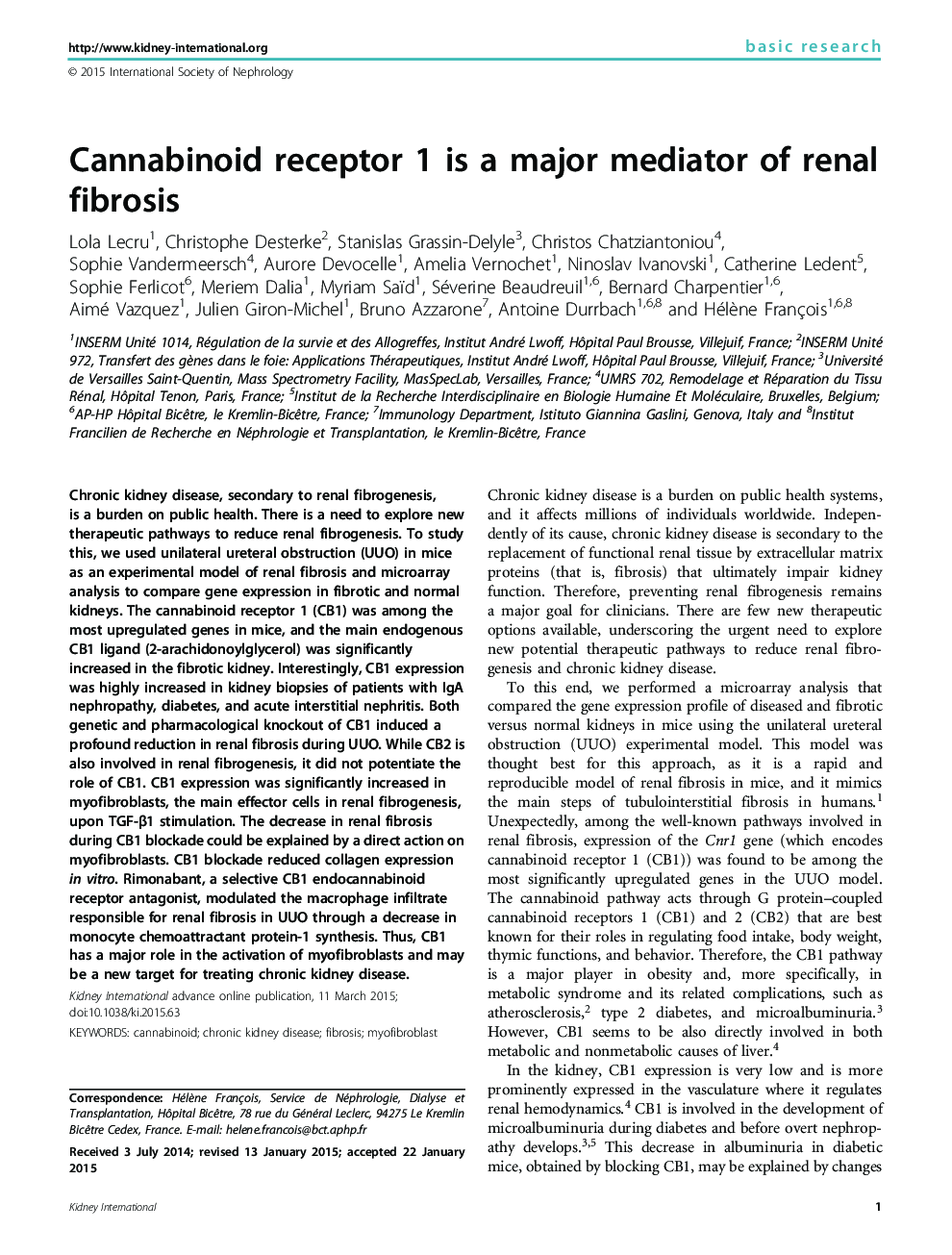| کد مقاله | کد نشریه | سال انتشار | مقاله انگلیسی | نسخه تمام متن |
|---|---|---|---|---|
| 6163964 | 1249454 | 2015 | 13 صفحه PDF | دانلود رایگان |
عنوان انگلیسی مقاله ISI
Cannabinoid receptor 1 is a major mediator of renal fibrosis
ترجمه فارسی عنوان
گیرنده کانابینوئید 1 واسطه اصلی فیبروز کلیوی است
دانلود مقاله + سفارش ترجمه
دانلود مقاله ISI انگلیسی
رایگان برای ایرانیان
کلمات کلیدی
کانابینوئید، بیماری مزمن کلیوی، فیبروز میفیبروبلاست،
موضوعات مرتبط
علوم پزشکی و سلامت
پزشکی و دندانپزشکی
بیماریهای کلیوی
چکیده انگلیسی
Chronic kidney disease, secondary to renal fibrogenesis, is a burden on public health. There is a need to explore new therapeutic pathways to reduce renal fibrogenesis. To study this, we used unilateral ureteral obstruction (UUO) in mice as an experimental model of renal fibrosis and microarray analysis to compare gene expression in fibrotic and normal kidneys. The cannabinoid receptor 1 (CB1) was among the most upregulated genes in mice, and the main endogenous CB1 ligand (2-arachidonoylglycerol) was significantly increased in the fibrotic kidney. Interestingly, CB1 expression was highly increased in kidney biopsies of patients with IgA nephropathy, diabetes, and acute interstitial nephritis. Both genetic and pharmacological knockout of CB1 induced a profound reduction in renal fibrosis during UUO. While CB2 is also involved in renal fibrogenesis, it did not potentiate the role of CB1. CB1 expression was significantly increased in myofibroblasts, the main effector cells in renal fibrogenesis, upon TGF-β1 stimulation. The decrease in renal fibrosis during CB1 blockade could be explained by a direct action on myofibroblasts. CB1 blockade reduced collagen expression in vitro. Rimonabant, a selective CB1 endocannabinoid receptor antagonist, modulated the macrophage infiltrate responsible for renal fibrosis in UUO through a decrease in monocyte chemoattractant protein-1 synthesis. Thus, CB1 has a major role in the activation of myofibroblasts and may be a new target for treating chronic kidney disease.
ناشر
Database: Elsevier - ScienceDirect (ساینس دایرکت)
Journal: Kidney International - Volume 88, Issue 1, July 2015, Pages 72-84
Journal: Kidney International - Volume 88, Issue 1, July 2015, Pages 72-84
نویسندگان
Lola Lecru, Christophe Desterke, Stanislas Grassin-Delyle, Christos Chatziantoniou, Sophie Vandermeersch, Aurore Devocelle, Amelia Vernochet, Ninoslav Ivanovski, Catherine Ledent, Sophie Ferlicot, Meriem Dalia, Myriam Saïd, Séverine Beaudreuil,
